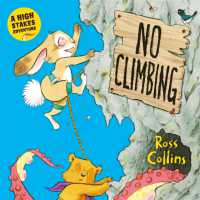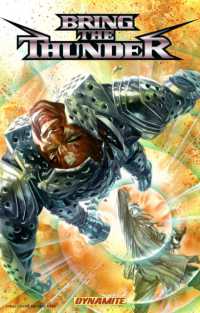- ホーム
- > 洋書
- > 英文書
- > History / World
Full Description
The study of human remains from ancient Egypt and Nubia has captured the imagination of many people for generations, giving rise to the discipline of palaeopathology and fostering bioarchaeological research. This book contains 16 papers that cover material presented at a workshop entitled 'Palaeopathology in Egypt and Nubia: A Century in Review,' held at the Natural History Museum, London (August 29-30, 2012), which formed part of a three-year research project, 'Sir Grafton Elliot Smith: Palaeopathology and the Archaeological Survey of Nubia.' The papers explore the subject of palaeopathology from its beginnings in the early 1900s through to current research themes and the impact of technological development in the field. Revealing the diverse range of methods used to study human remains in these regions, the book gives readers an insight into the fascinating work carried out over the last century, and suggests some possible future directions for the field.
Contents
Chapter 1: History of bioarchaeology: Sir Grafton Elliot Smith: Palaeopathology and the Archaeological Survey of Nubia (Rosalie David); Whose body? The human remains from the 1908-1909 season of the Archaeological Survey of Nubia (Jenefer A. Cockitt); The more things change? The archaeological work of Alfred Lucas (Ryan Metcalfe); Chapter 2: Palaeopathology: Harris lines, ill health during childhood, poor diet, emotional stress or normal growth patterns? (Abeer Eladany); An interesting example of a condylar fracture from ancient Nubia suggesting the possibility of early surgical intervention (Mervyn Harris, Tristan Lowe and Farah Ahmed); An overview of the evidence for tuberculosis from ancient Egypt (Lisa Sabbahy); Palaeopathology, disability and bodily impairments (Sonia Zakrzewski); Chapter 3: Dental palaeopathology: Dental infections in ancient Nubia (Roger J. Forshaw); A case of severe ankylosis of temporomandibular joint from New Kingdom necropolis (Saqqara, Egypt) (Ladislava Horáčková and Frank Rühli); Occlusal macrowear, antemortem tooth loss, and temporomandibular joint arthritis at Predynastic Naqada (Nancy C. Lovell); Chapter 4: Mummification: How to make a mummy: A late hieratic guide from Abusir (Jiří Janák and Renata Landgráfová); Studying mummies: Giving life to a dry subject (Michael R. Zimmerman); Chapter 5: Imaging in bioarchaeology: Microstructural analysis of a Predynastic iron meteorite bead (Diane Johnson, Monica M. Grady, Tristan Lowe and Joyce Tyldesley); Imaging and analysis of skeletal morphology: New tools and techniques (Norman MacLeod); Chapter 6: Digital resources: Mummies on rails (Ahmad Alam, Ian Dunlop, Robert Stevens, Andrew Brass, Jenefer Cockitt, Rosalie David and Ryan Metcalfe); Mummy website and database (Barbara Zimmerman, Sukeerthi Shaga, Pavitra Kaveri Ramnath, and Sai Phaneendra Vadapalli)







